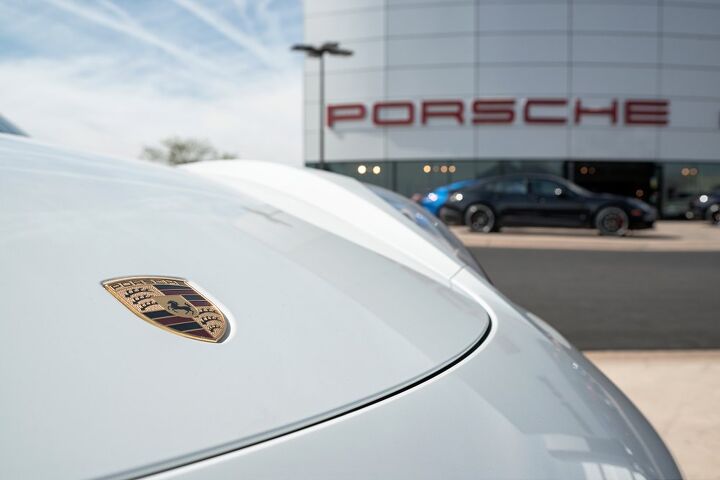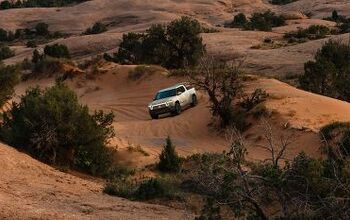Porsche Becoming Volume Brand

While it may not be on the cusp of supplanting Toyota in terms of sales, the Porsche brand has enjoyed relatively consistent growth since 2009. Despite 2020 representing a poor sales year for just about everyone who wasn’t producing vaccines, the German manufacturer weathered the storm better than most and came back to break a few records the following year.
By the end of 2021, Porsche had sold nearly 302,000 vehicles globally. It also managed to break its previous sales records in China and the United States. Considering that global production volumes have remained suppressed by supply chain problems, it was an impressive accomplishment. However, Detlev von Platen, Executive Board Member Sales & Marketing at Porsche AG, believes the automaker can still outdo itself in 2022.
Speaking with Automobilwoche, von Platen indicated the 40,000-person company would be seeking to hire another 400 pairs of hands to help with elevated demand. With the right kind of people and a little luck, he suggested this year could be the best the company has ever had. But, even if the stars fail to align perfectly, von Platen isn’t worried about volume.
“When I look at the current orders, I’m confident for 2022. Growth in sales could reach a similarly high level this year as in 2021,” he told the outlet, adding that wait times certain on models had reached 12 months.
Porsche spent decades as a low-volume automaker specializing in high-performance vehicles. But it has historically made attempts to improve its volume, often resulting in short-term successes that foreshadow an evaporating market share.
It’s been a while since we’ve seen a collapse. Minus the previous recession, sailing has been relatively smooth ever since the automaker launched the Porsche Cayenne in 2002. The company has since moved into manufacturing fewer sports coupes to focus on the Panamera sedan and Macan crossover, both of which outsell the iconic 911 by huge margins. Though it would be a lie to suggest that deliveries of the brand’s two-door options were poor.
Porsche’s quest for volume has also been helped by its merger with Volkswagen, which offered access to its vast manufacturing capabilities and technology borrowed from the Audi brand. In fact, Porsche’s best-selling model (the Macan) shares a platform with the Audi Q5 while the larger Cayenne overlaps with the Q7.
But the company has committed itself, along with the rest of Volkswagen Group, to swiftly transition into selling EVs. While this remains a dangerous proposal if those products fail to deliver, sales of the Porsche Taycan doubled in 2021 (vs 2020) and now rival 911 volumes in markets where they’re sold together. The automaker is planning to launch an electrified Macan in 2023, followed by battery-powered versions of the 718 Boxster and Cayman.
But it remains to be seen if the adoption rate of EVs will keep pace with Porsche’s plan to implement them. Despite the electric segment enjoying some healthy growth of its own, EVs still only represent 3 percent of the total market. With Porsche having grown quite a bit over the last two decades and plans to dive headlong back into motorsport, it needs to figure out how to sell alternative-energy vehicles without nuking volume or alienating its customer base in the short term.
[Image: Tishomir/Shutterstock]

A staunch consumer advocate tracking industry trends and regulation. Before joining TTAC, Matt spent a decade working for marketing and research firms based in NYC. Clients included several of the world’s largest automakers, global tire brands, and aftermarket part suppliers. Dissatisfied with the corporate world and resentful of having to wear suits everyday, he pivoted to writing about cars. Since then, that man has become an ardent supporter of the right-to-repair movement, been interviewed on the auto industry by national radio broadcasts, driven more rental cars than anyone ever should, participated in amateur rallying events, and received the requisite minimum training as sanctioned by the SCCA. Handy with a wrench, Matt grew up surrounded by Detroit auto workers and managed to get a pizza delivery job before he was legally eligible. He later found himself driving box trucks through Manhattan, guaranteeing future sympathy for actual truckers. He continues to conduct research pertaining to the automotive sector as an independent contractor and has since moved back to his native Michigan, closer to where the cars are born. A contrarian, Matt claims to prefer understeer — stating that front and all-wheel drive vehicles cater best to his driving style.
More by Matt Posky
Latest Car Reviews
Read moreLatest Product Reviews
Read moreRecent Comments
- Olivehead The Honda Civic wins on looks and interior material quality and style. The Civic looks like a scaled down "real" car (i.e., midsize) while the Corolla never lets you forget what it is-a compact car, harkening back to the Tercel, etc. No comparision either in the interior materials of the Civic (a notch below Acura level) and general layout. There too, the Corolla comes off as a compact runabout. The Civic hatchback is especially cool.
- Mike Beranek While the product may appear to be "better", only time will tell. The American automotive environment can chew a car up and spit it out. Will these Chinese EVs survive like a quarter-century old Cavalier, or will they turn out like VinFast's "cars"?
- Mike Beranek This police vehicle will be perfect for when the State of Florida starts tracking every pregnancy.
- Dave M. The Highlander hybrid, a larger, heavier vehicle, gets better mpgs. Why? Also, missed opportunity - if Toyota had made this a hatchback, they could have scooped up the "want a Tesla S but not ready for a full EV" crowd, however small or large they may be....
- TheMrFreeze Difficult call...the more the mainstream automakers discontinue their more affordable models and only sell crazy overpriced EVs and trucks, the more appealing the idea of letting in cheap imported cars becomes with the buying public. If the government is going to impose tariffs on Chinese vehicles, at the same time they need to be getting with the Big 3 and telling them to fill the void with affordable models and not use the tariff as an excuse to simply raise prices. Otherwise, public pressure could see the tariffs withdrawn.I seem to recall the last administration put a 25% tariff on Chinese steel, at which point the US manufacturers immediately used the opportunity to raise their prices 25%...that needs to not happen.

































Comments
Join the conversation
An electric Macan, if they give it decent range, will cost over $100K. It's hard to get excited about cars in that price range.
In 1971 I was perusing the brochure for 911s at the Porsche dealership in Salt Lake City. One of the pages in the brochure depicted the hand-crafted care in building "your new 911" with a car on a rotisserie having undercoating brush-applied by a white coated technician at their factory. These days that factory must have a large number of brush-toting undercoating robots working on a ferris wheel of rotisseries to deal with being a volume brand. What a world. EDIT: I ended up passing on the 911 and purchased a '68 912. I wonder if 912s were hand-crafted and brush coated?